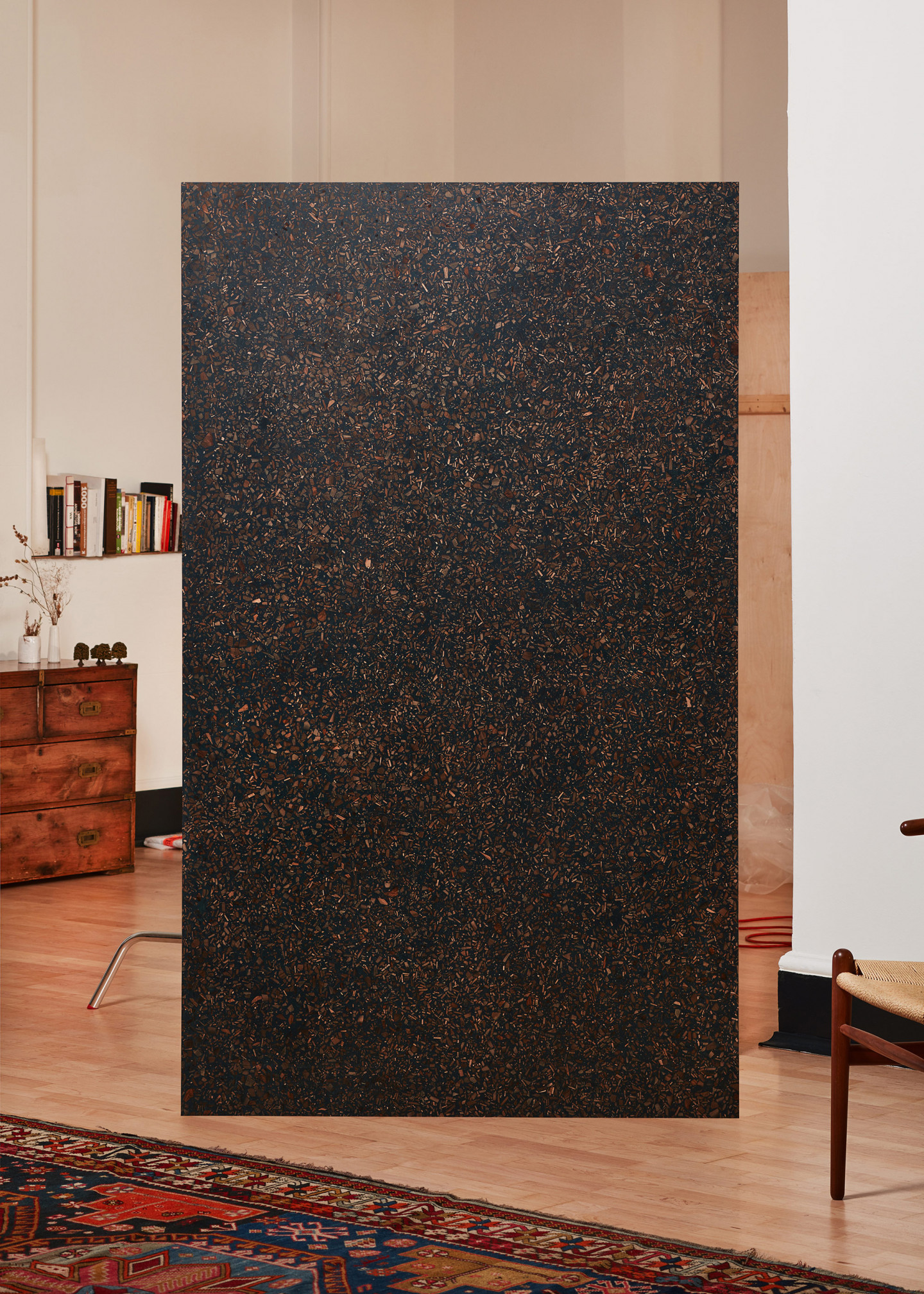London-based studio, Foresso, presents a new reimagining of traditional terrazzo — a sustainable material that recycles raw waste from the construction industry. Their material, also called Foresso, is crafted from high-quality waste FSC timber which is unusable for manufacturing — such as joinery — due to its irregular sizing.
Originating in Italy in the 16th-Century as a means to recycle the waste offcuts of stone, terrazzo is a composite material traditionally crafted by adding marble chippings to cement. Inspired by the material’s graphic appearance and detailing, the Foresso team, recreate it, using wood instead of marble. The result is a warm-coloured material with timber grains running throughout its composite structure.
The Foresso team uses a simple process in the construction of their material, and due to the material’s irregularity, each piece differs. “The wood has to be cut, chipped, and then sorted by hand to grade the chips while the plaster waste is pulverised and passed through an extremely fine mesh to turn it into a powder ready for reuse,” says Foresso’s Creative Director, Conor Taylor. After this, the materials (and the wood dust) are then mixed with a bio-based resin and pigment before being cast directly onto the plywood substrate. “The sheets are then left to cure at room temperature for 3 days,” Taylor explains.
Once fully cured the sheets are sanded to expose the wood chips so the team can begin the finishing process. “We use huge wide belt sanders to both remove material and polish the surface to a low sheen, the final surface is finished by hand and sealed with a hard-wax oil, or sometimes lacquered for high traffic environments.” The result is a smooth and polished material resembling terrazzo yet uses chippings up that would otherwise become a waste product. Taylor and his team also make their own tongue and groove flooring, cut wall paneling and tabletops using their CNC machine. “By keeping it in house we can drive down waste and make sure that every bit of each sheet gets used,” says Taylor.










